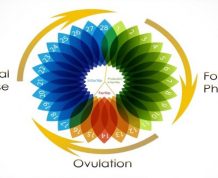
IVF is short for In Vitro Fertilization, which is one of the best treatments for infertility. It was back in the 1970s that this procedure was developed. The procedure, to say it in simple words, revolves around fusing the egg and the sperm outside the body in laboratory conditions. Claim Your 20 Free Pregnancy Tests – Click Here
This is usually carried out if for some reason natural pregnancy is not an option. IVF has become very popular now and more and more couples are turning to IVF to solve their infertility issues.

The most common reason behind going for IVF is a blocked fallopian tube because of which the egg fails to travel to the uterus for implantation. IVF may also be carried out in case the quality of the sperm is not up to the mark.
For example, if the sperm count is low or if the sperm motility is not good enough, IVF is a treatment option. IVF is also suggested if the ovarian reserve of the woman is low. Ovarian reserve is the number of eggs in the ovaries. Sometimes, the number is less and the eggs present are of low quality, not good enough for fertilization.
In this case, the good eggs are taken and fused in the lab. Endometriosis, polycystic ovarian syndrome, and unexplained fertility are also some reasons behind choosing IVF along with other reasons such as recurrent miscarriages.

The general process of IVF can be broken down into six main steps. In the first step, the natural hormonal system of the woman is shut down by giving her medication. Then, more medication is given so that the ovaries are stimulated into producing many eggs instead of the normal single egg.
The patient is then monitored for about two weeks every two days to find out the response to the medication. This is generally done through blood tests. The fourth step is to remove the eggs from the body. This is done through surgery called oocyte retrieval.
Now the eggs and the sperm are fused together under laboratory conditions in a petri dish or a test tube. All the embryos are incubated for about six days. After this time period, the embryos are transferred into the uterus of the woman.

It so happens that success is not guaranteed with IVF and each cycle of IVF can cost a lot of money. Not many people can actually afford it in the first place and those who do, definitely can’t afford to spend so much money twice. This is the reason why many couples choose to have some of the embryos frozen.
The frozen embryos can be used later on for another cycle if the first cycle wasn’t successful or if the couple wants another baby. By freezing a few embryos, the couple saves a lot of money because half the procedure won’t be repeated the second time. Thus, choosing to have a few embryos frozen during the first cycle is ideal.

Recent research has also suggested that frozen embryos are actually better than the fresh embryos in that they are more likely to result in a successful pregnancy. Before it was thought that freezing actually reduces the viability of eggs.
Now apparently, substantial proof has been discovered to affirm that frozen eggs increase the odds of a successful pregnancy. And this might come into favor for those older moms trying to get pregnant where age and fertility are running against her.










Comments